Spotify Is Killing Song Titles
Now that Spotify is a multibillion dollar juggernaut on track to IPO, I thought it would be interesting to see what effects the company (and streaming in general) has had on the broader music business.
To that end I scraped Billboard Hot-100 chart data to compare the pre and post Spotify eras. By analyzing the kinds of songs and artists that had the most success on the Hot-100, we can see that in 9 short years, there have been major changes in music.
Before diving in, there are two quick notes on methodology that are worth mentioning. I collected 18 years of music data and broke them down into two groups: 2000–2008 data and 2009–2017 data. These sets coincide closely with the pre and post Spotify eras¹.
In addition, the methods used by Billboard to decide what goes into the Hot-100 have changed over the years. In the pre-Spotify era, the Billboard charts were based on albums/single sales and radio airplay. With the introduction of streaming services, the formula changed to 35–45% sales, 30–40% airplay, and 20–30% streaming². Most people below a certain age (myself included), consume music exclusively through streaming services, so if anything, the effects of Spotify and their internet brethren are being underweighted here.
With those caveats in mind, we can look at some trends in music
Internet economics takes over and produces a longer tail
As Chris Anderson described over 10 year ago, internet content tends to follow a power law distribution³. This means that success on the internet is dominated by a few players at the top, and then a long tail of niche offerings with smaller followings. As Spotify and other streaming players came onto the scene, this trend intensified. In the pre-Spotify era of the 2000s, there were a total of only 3092 songs on the Hot-100. In the same amount of time from 2009–2018, there were 3933 songs on the chart, an increase of 27%. We can see that trend in the below curves where the dominant songs get even more dominant, even as the tail gets longer in the post-Spotify era.
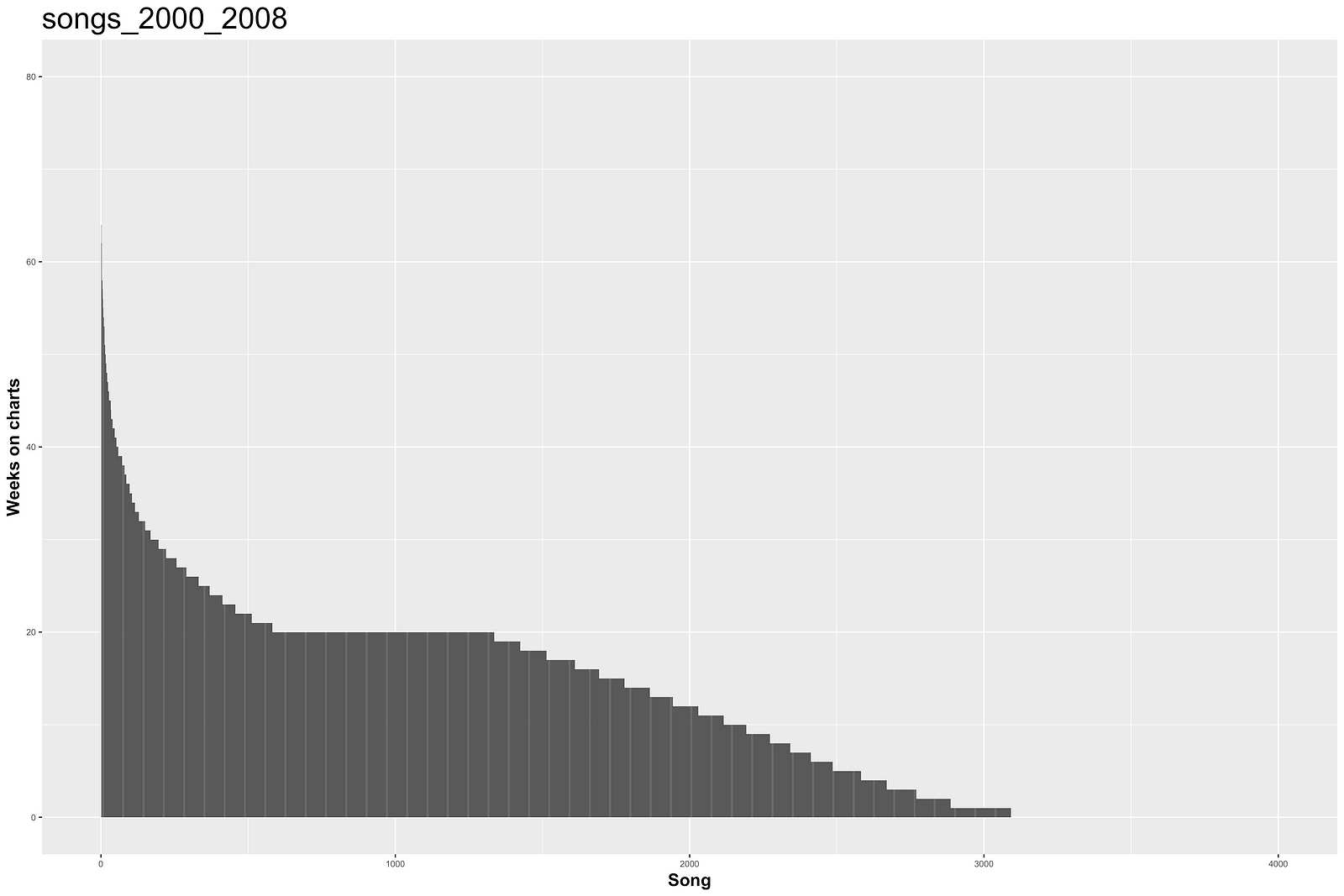
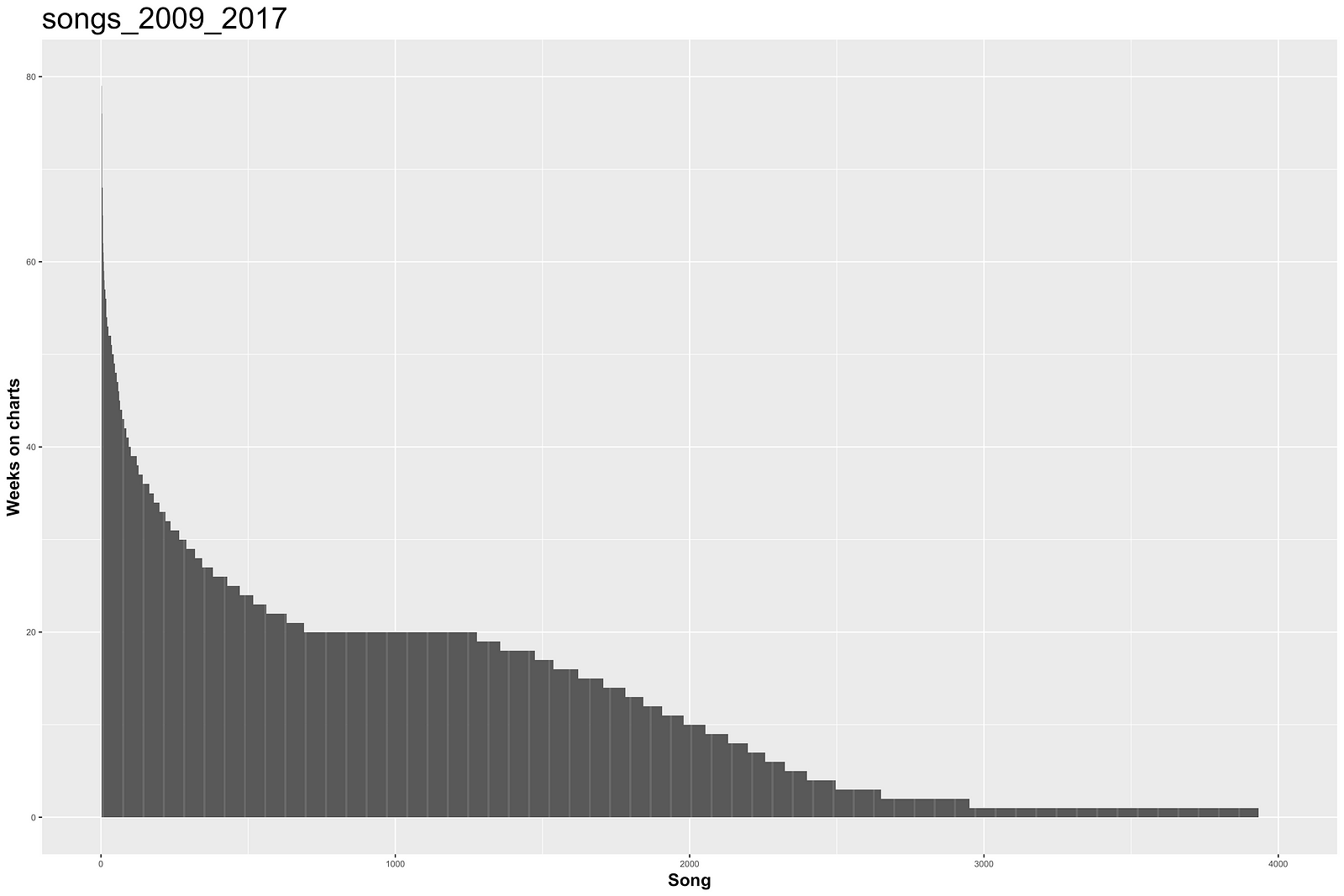
From 2000–2008 songs that only charted for a week were somewhat rare. From 2009–2017 they are quite common. The sharpening of the tail in top artists is even more stark.
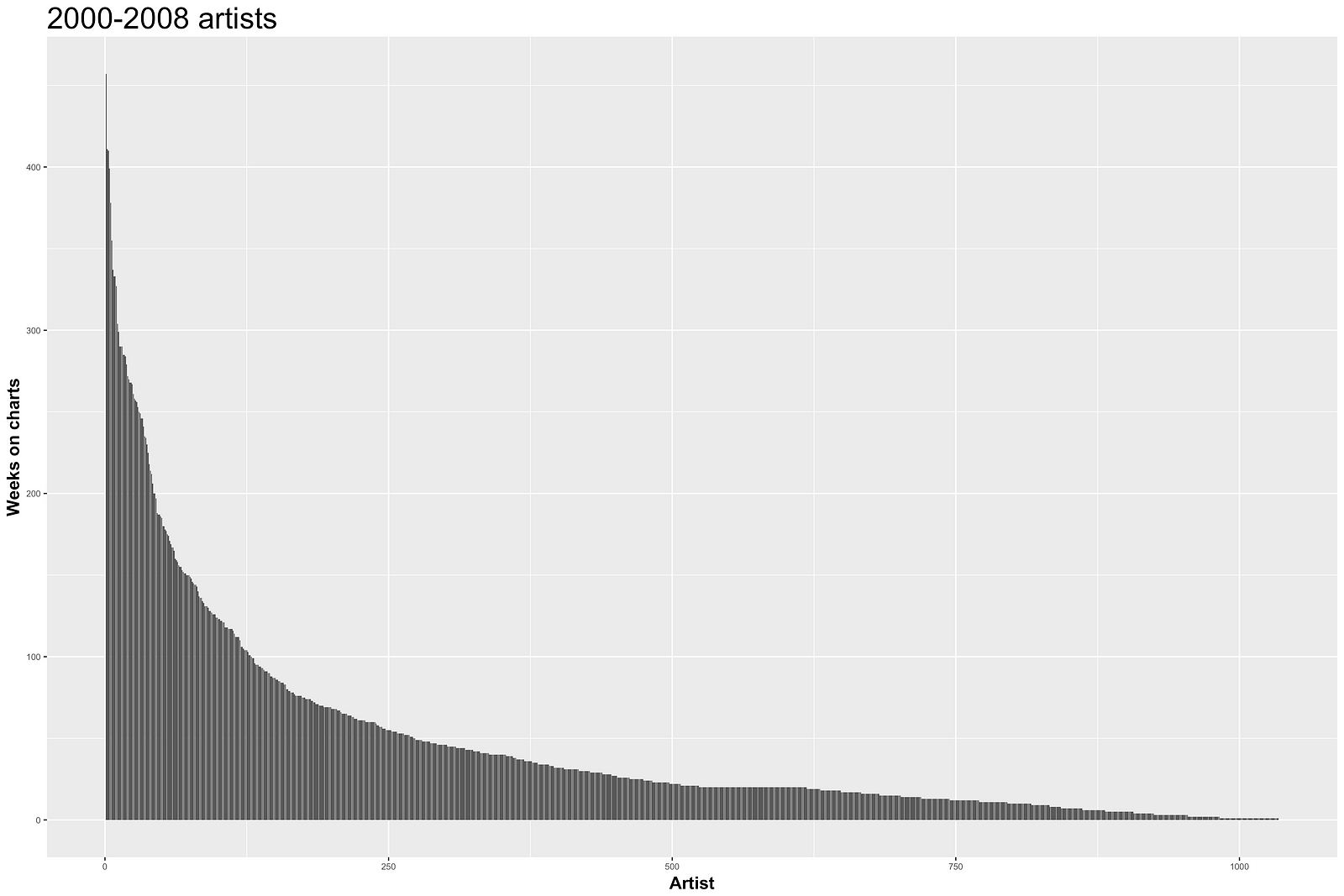
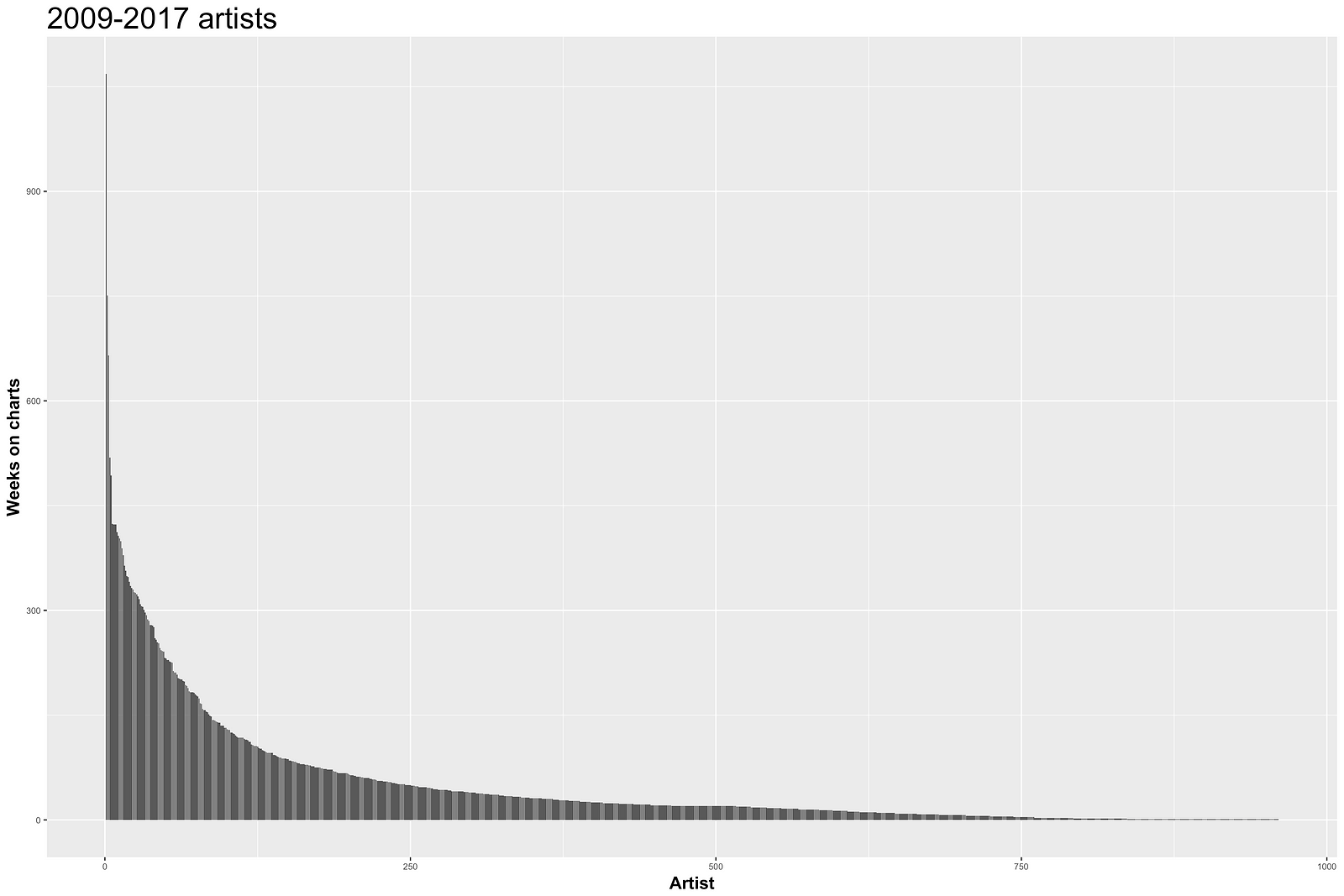
Song titles become less meaningful
With the death of record stores, radio, and to a lesser extent, iTunes, the unit of music delivered to customers has shrunk. From the album, to the song, to now, the stream, music has been disentangled from it’s larger context. As such, we would expect that the names of albums and songs are uncorrelated to their musical success. One way to measure this is the number of unique words in a song title. Although there does appear to be an art to naming a hit song (or say book), the longer tail of music means more random song titles chosen by artists instead of record executives.
Number of unique words in song titles from 2000–2008 = 2113
Number of unique words in song titles from 2009–2017 = 2512
There were 19% more unique words in song titles in the post Spotify era. In addition, the number of words in a song title has evolved.
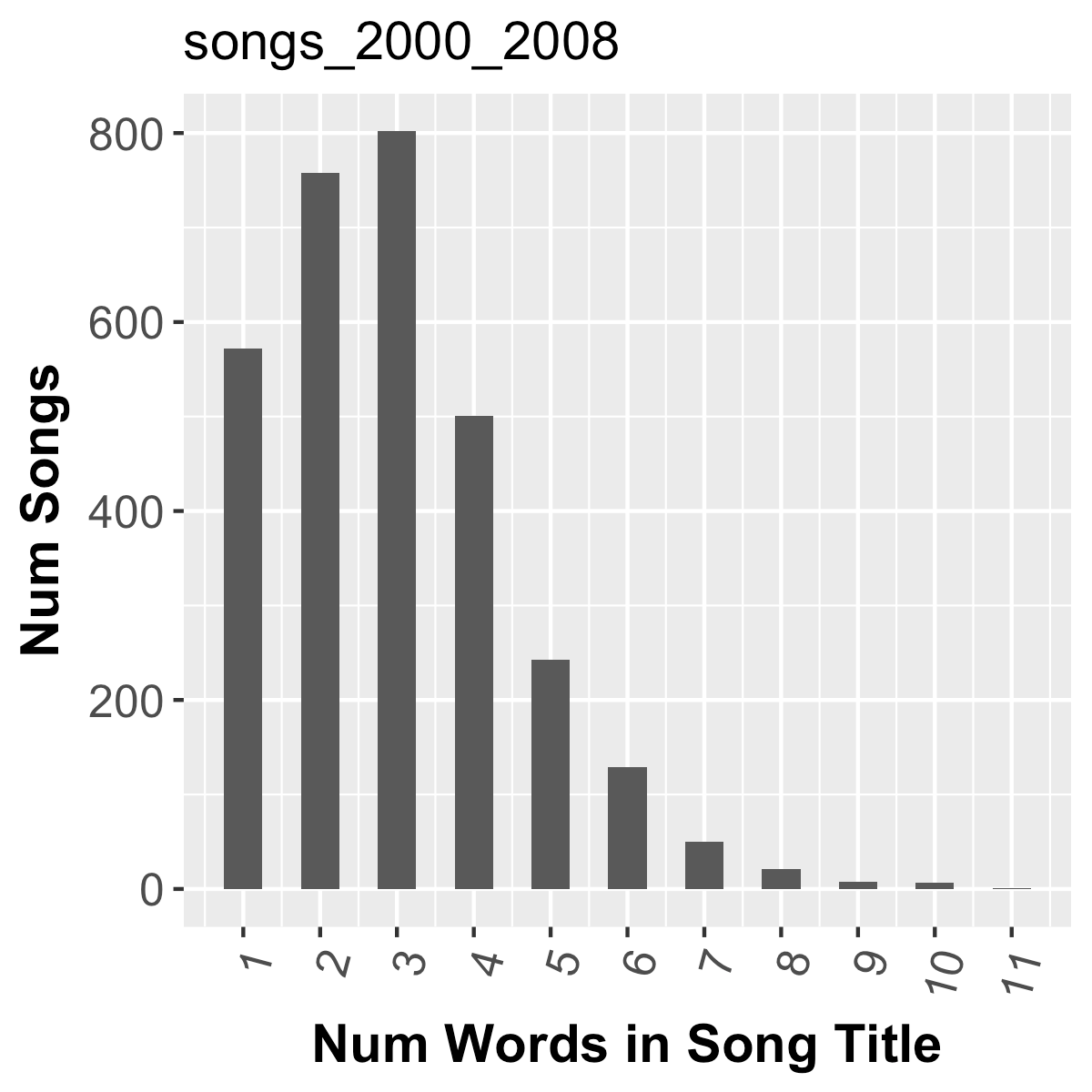
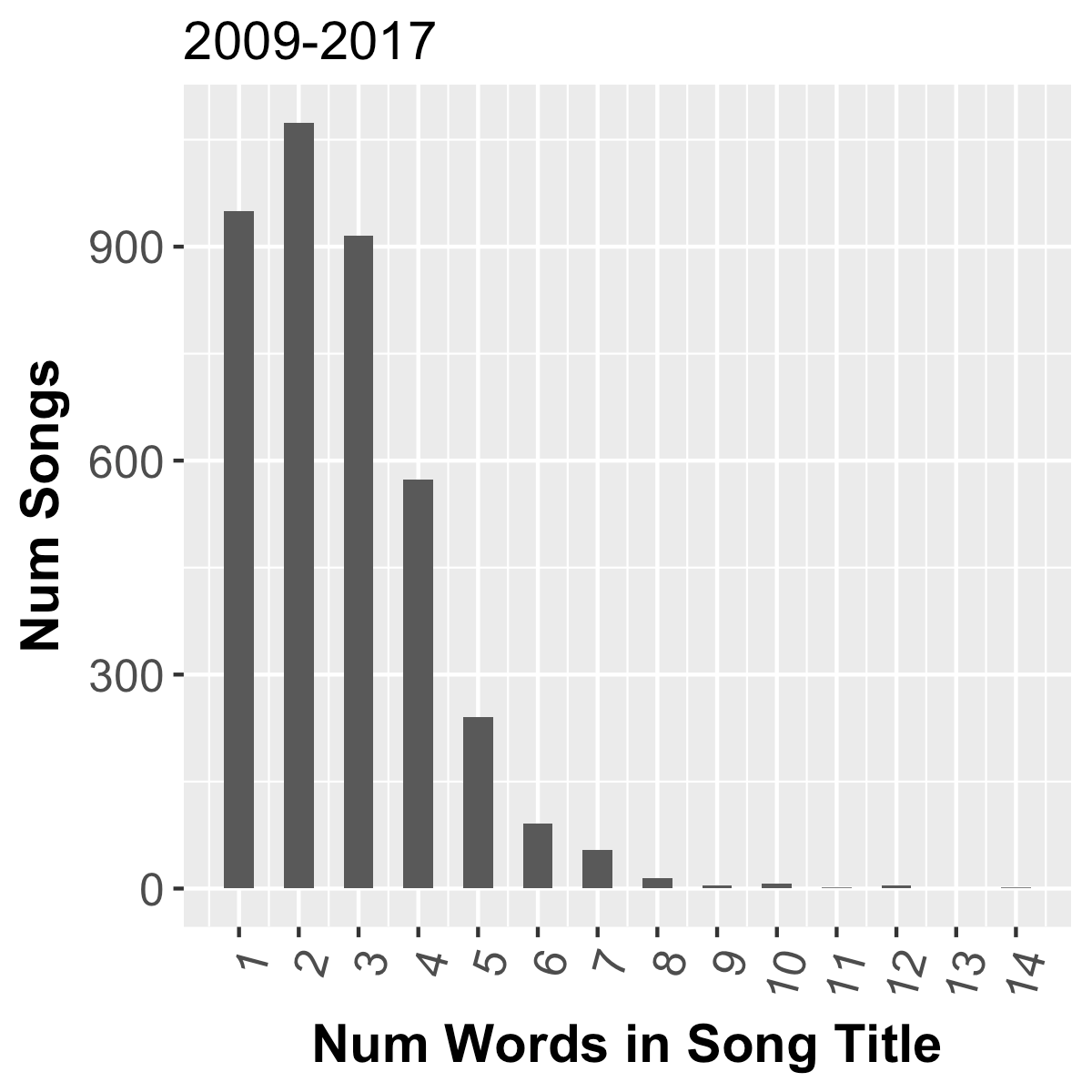
The same sharpening of the curve is present even here. Our shorter attention spans mean more song titles with 1 or 2 words in them. There are also more songs with very long titles >7 words. The middle is what shrinks as a percentage.
Spotify killed Country Music (or at least Walmart’s CD business)
When music first hit the internet, it did so mostly through Napster and other forms of music piracy. The record industry was decimated across all genres except one — country. For this reason, country music was very heavily represented on the Billboard charts in the early 00s. Due to the popularity of streaming services, Walmart cut its CD section in half in 2014⁴ and experienced declining sales even before that. The effect on the top artists of the post Spotify era is clear.
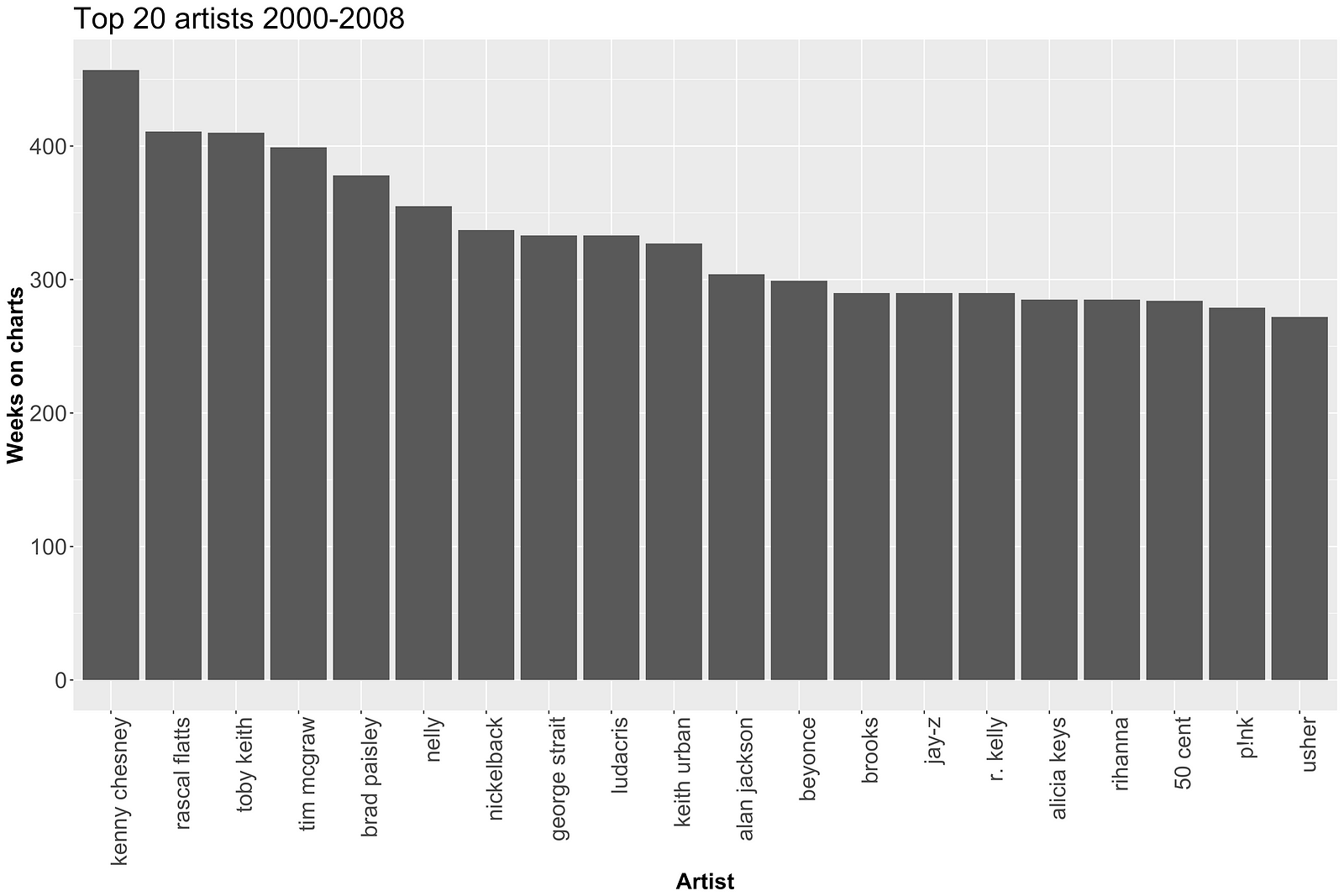
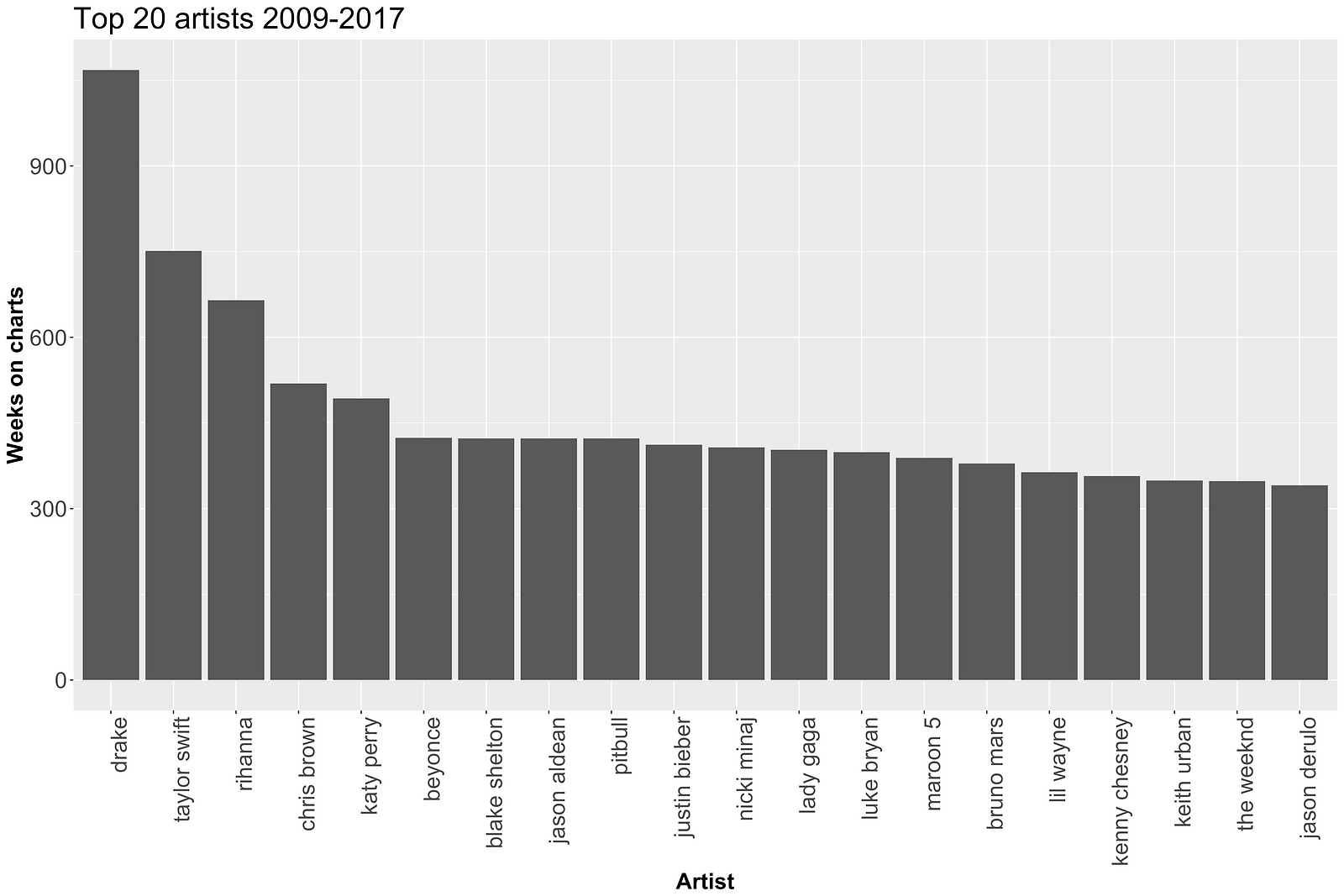
The top artists transitioned from Kenney Chesney, Rascal Flats and Toby Keith to Drake, Rihanna, and Taylor Swift. Clearly the times have changed
As streaming becomes even more dominant in music consumption, we should expect these trends to continue. More songs, more dominant star artists, less country music, and last but not least, more delightfully specific song titles. I’m looking at you “Hope She Cheats On You (With A Basketball Player)”.
